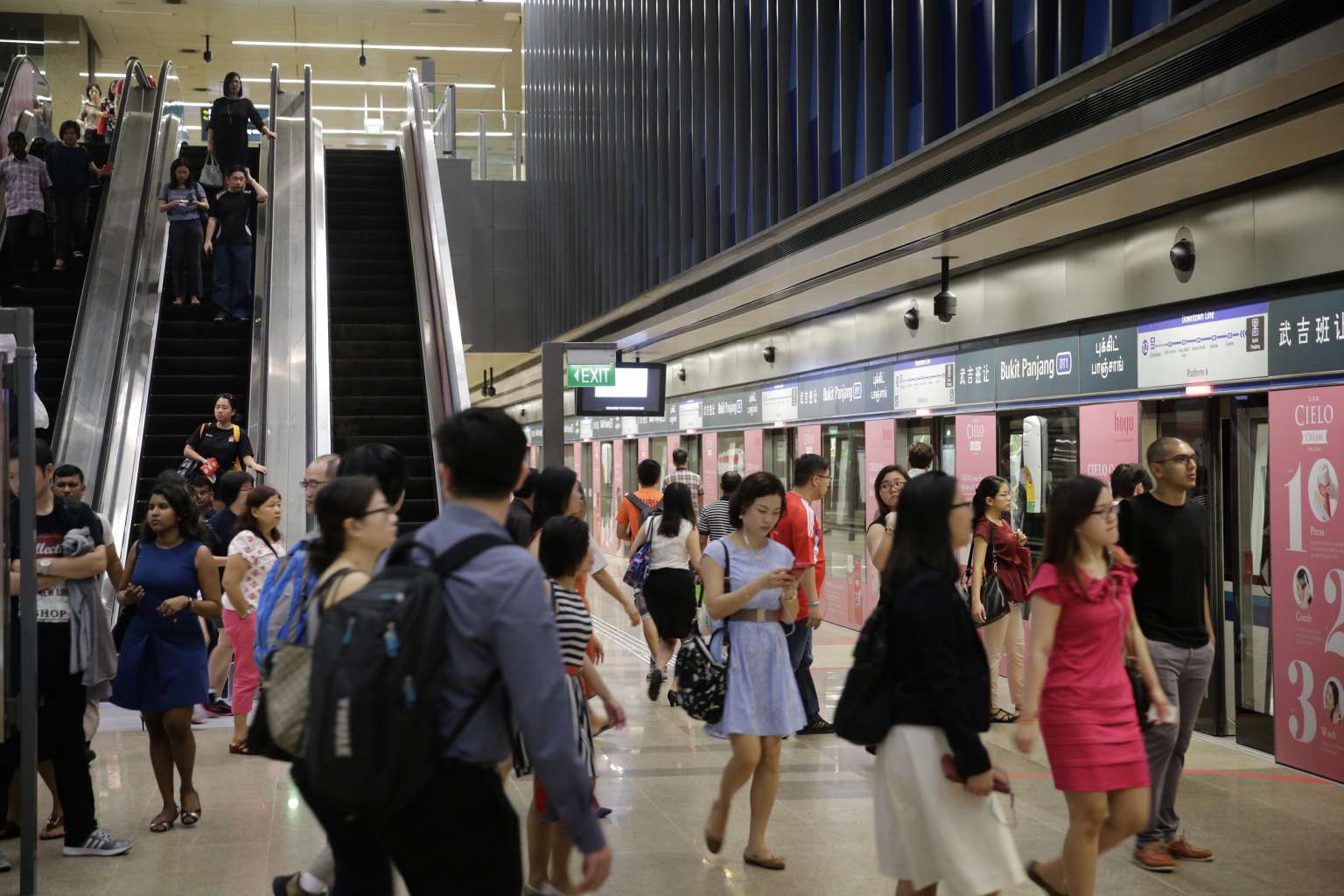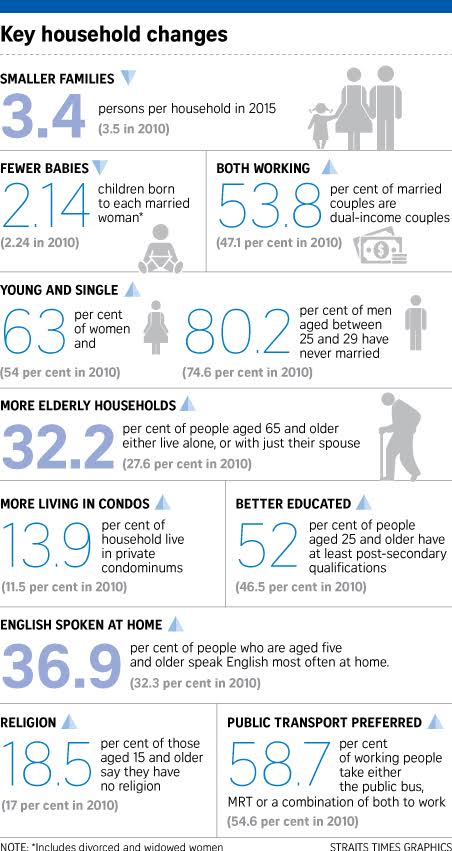More Singaporeans take bus, MRT to work: government survey
Sign up now: Get ST's newsletters delivered to your inbox

A government survey revealed that six out of 10 Singapore residents take public transport to work.
ST PHOTO: KEVIN LIM
Pearl Lee
Follow topic:
SINGAPORE - Almost six out of 10 Singapore residents take public transport to work as new train lines expand the country's rail network, according to a government survey.
The proportion is highest among those living in Toa Payoh, at 65.5 per cent, Sembawang (64.9 per cent), Bukit Merah (64.4 per cent) and Queenstown (63.8 per cent).
Conversely, the proportion of residents who drive to work is highest among those living in the better-off districts of Tanglin (54.9 per cent), Bukit Timah (53.9 per cent), and Marine Parade (34.9 per cent).
This travelling pattern of citizens and permanent residents, is shown in the latest General Household Survey, done every ten years to give the changing profile of the Singapore family, including its size, type of accommodation, educational level, travel pattern and religion. It was released on Wednesday.

The survey shows 58.7 per cent of residents aged 15 and older took either the MRT or bus, or a combination of both, to work last year, compared to 50.7 per cent a decade ago.
On the other hand, fewer use the car to get to work: 21.9 per cent last year compared with 24.8 per cent in 2010 and 22.9 per cent in 2005.
In the past 15 year, three MRT lines were added to the train network.
The North-East Line connecting central Singapore to the north-eastern part of the island started operating fully in 2003, and the Circle Line, which covers central Singapore, Buona Vista, and Paya Lebar, became fully operational in 2011.
Parts of the Downtown Line running from Bukit Timah to Chinatown opened in end-2015.
The survey also found that more people have at least tertiary level education.
A total of 42.9 per cent of residents aged 25 and older have at least a diploma or university qualification, compared with 37 per cent five years ago.
On the other hand, the proportion who did not complete their secondary education went down to 29.1 per cent last year, compared with 34.5 per cent in 2010.
Correction Note: An earlier version of the article stated that the General Household Survey was conducted once every five years. This is wrong. The survey is done once 10 years. We are sorry for the error.

